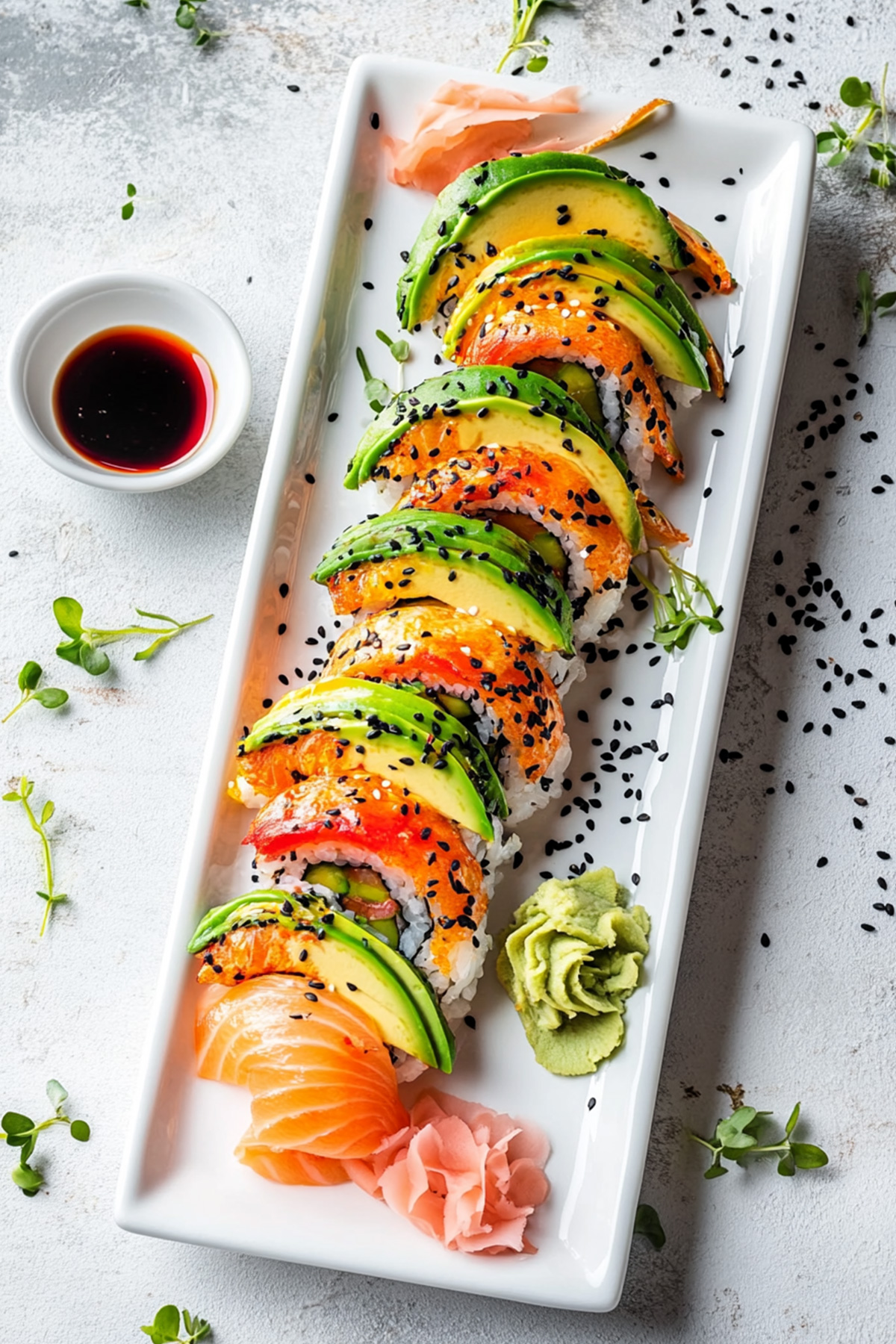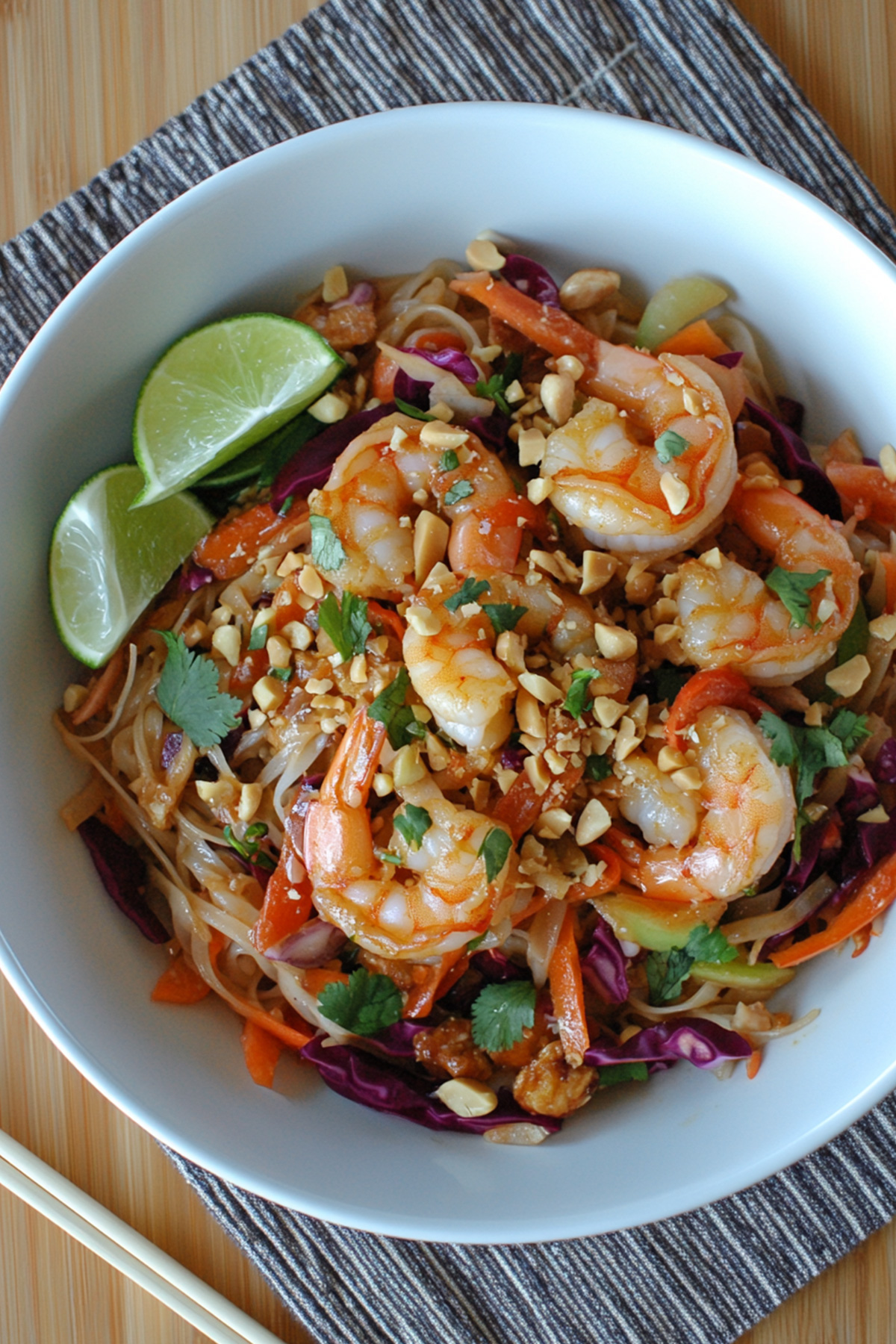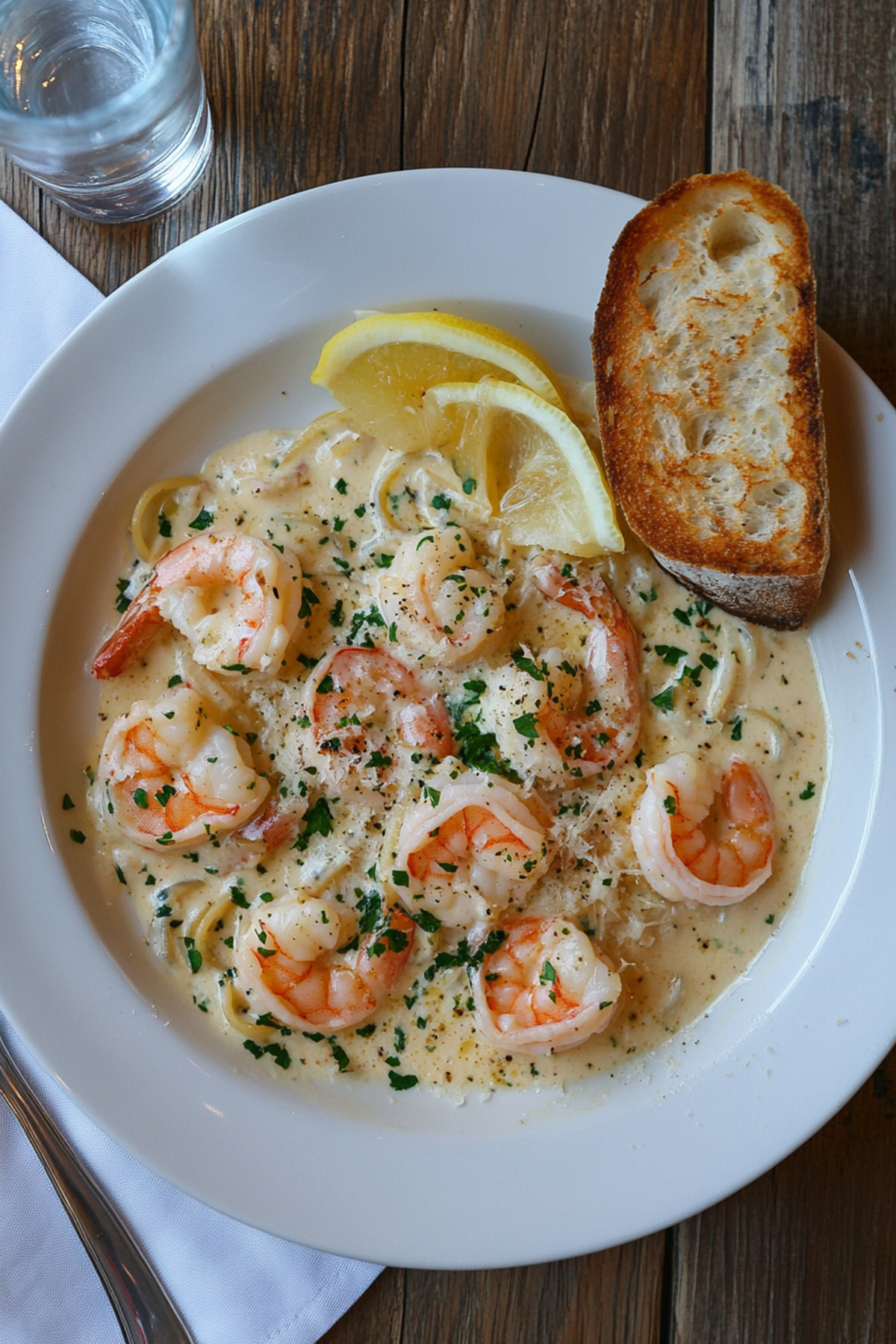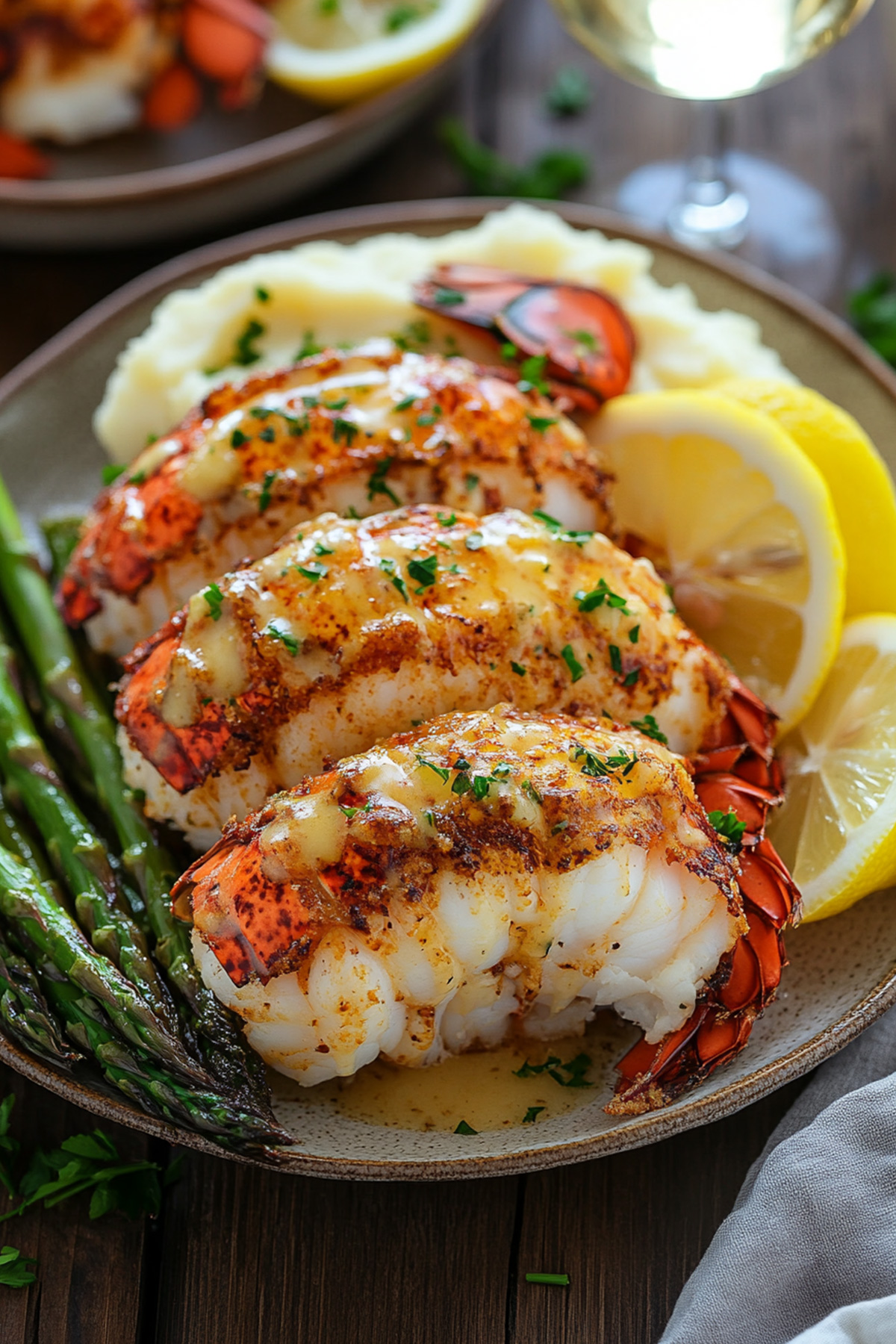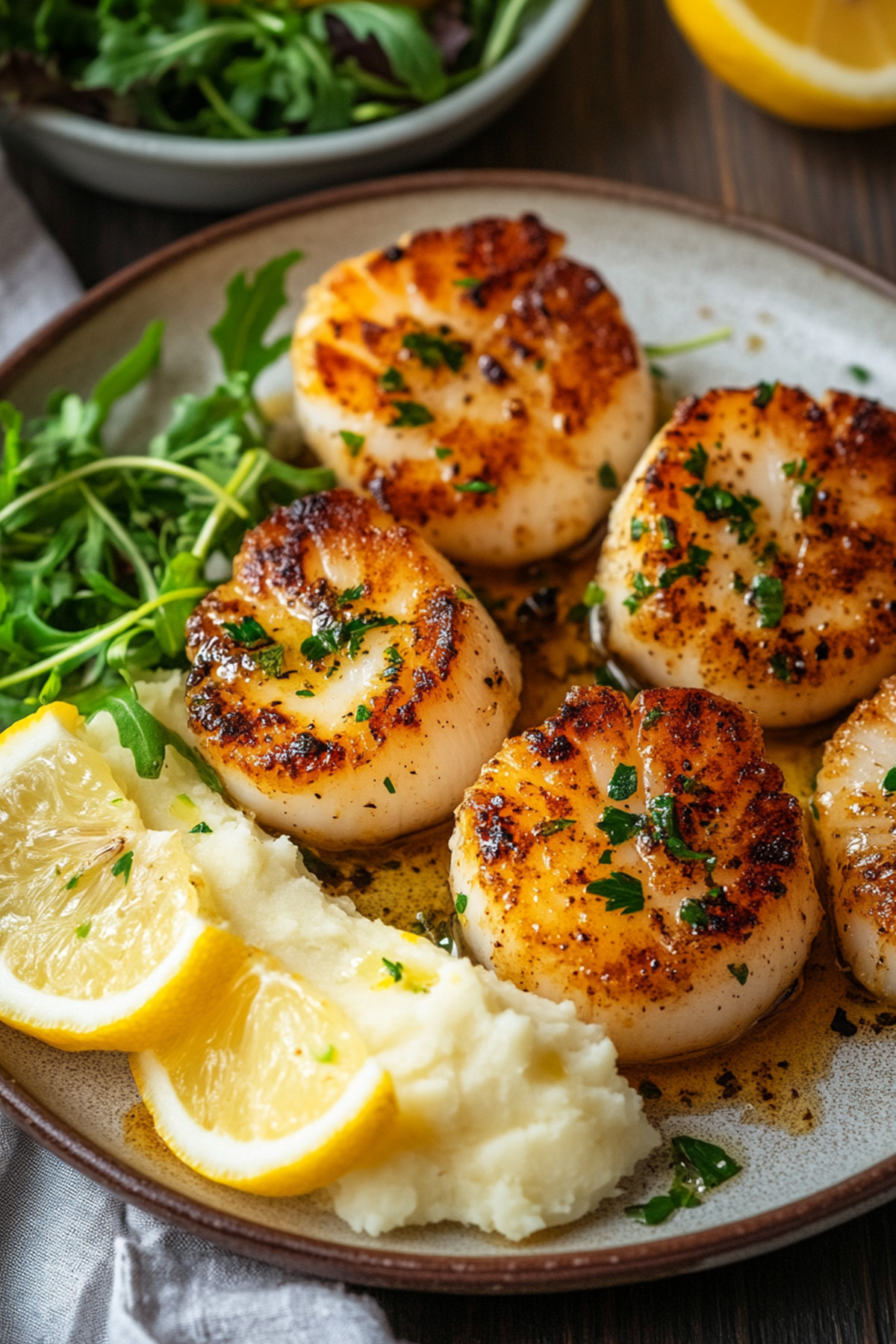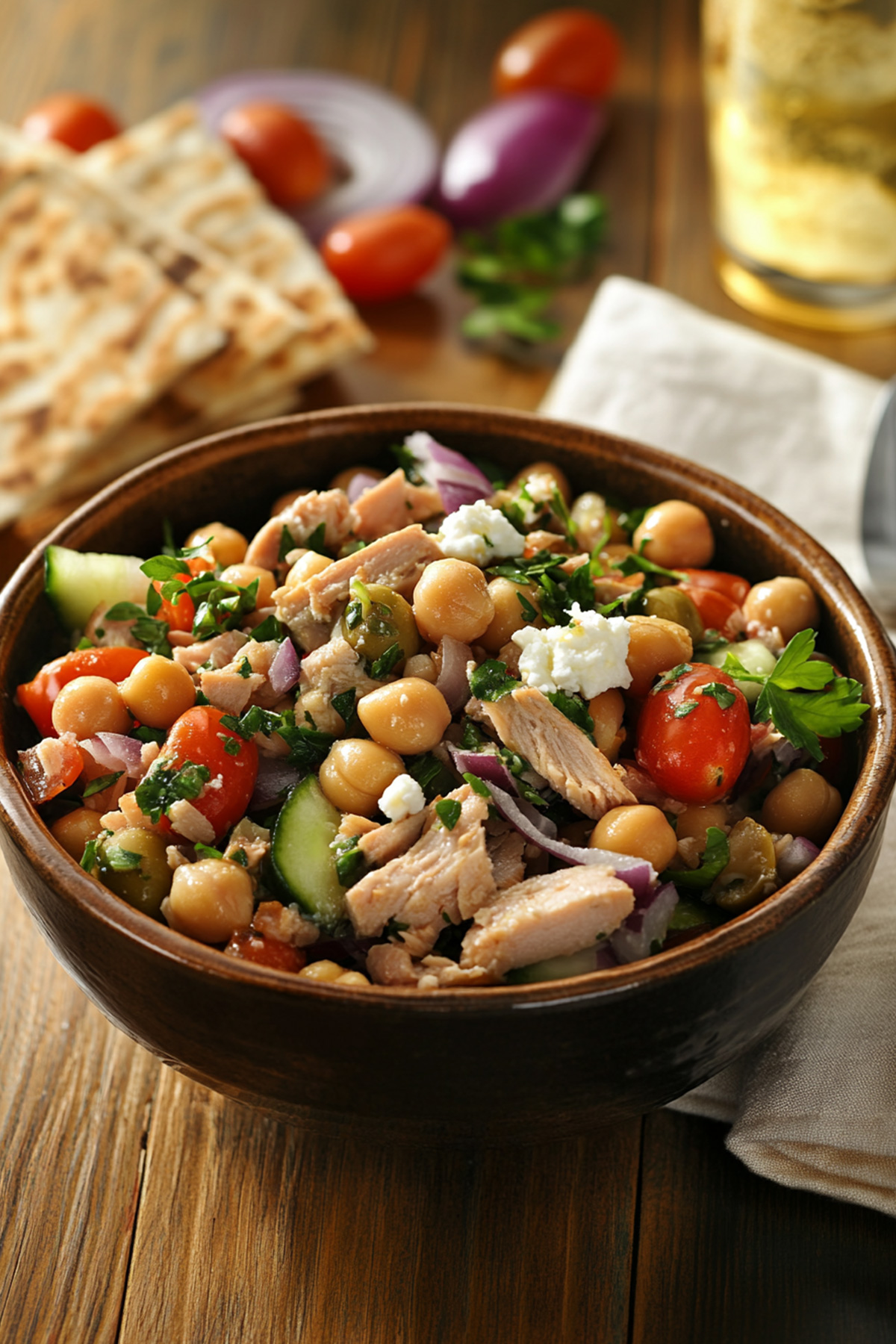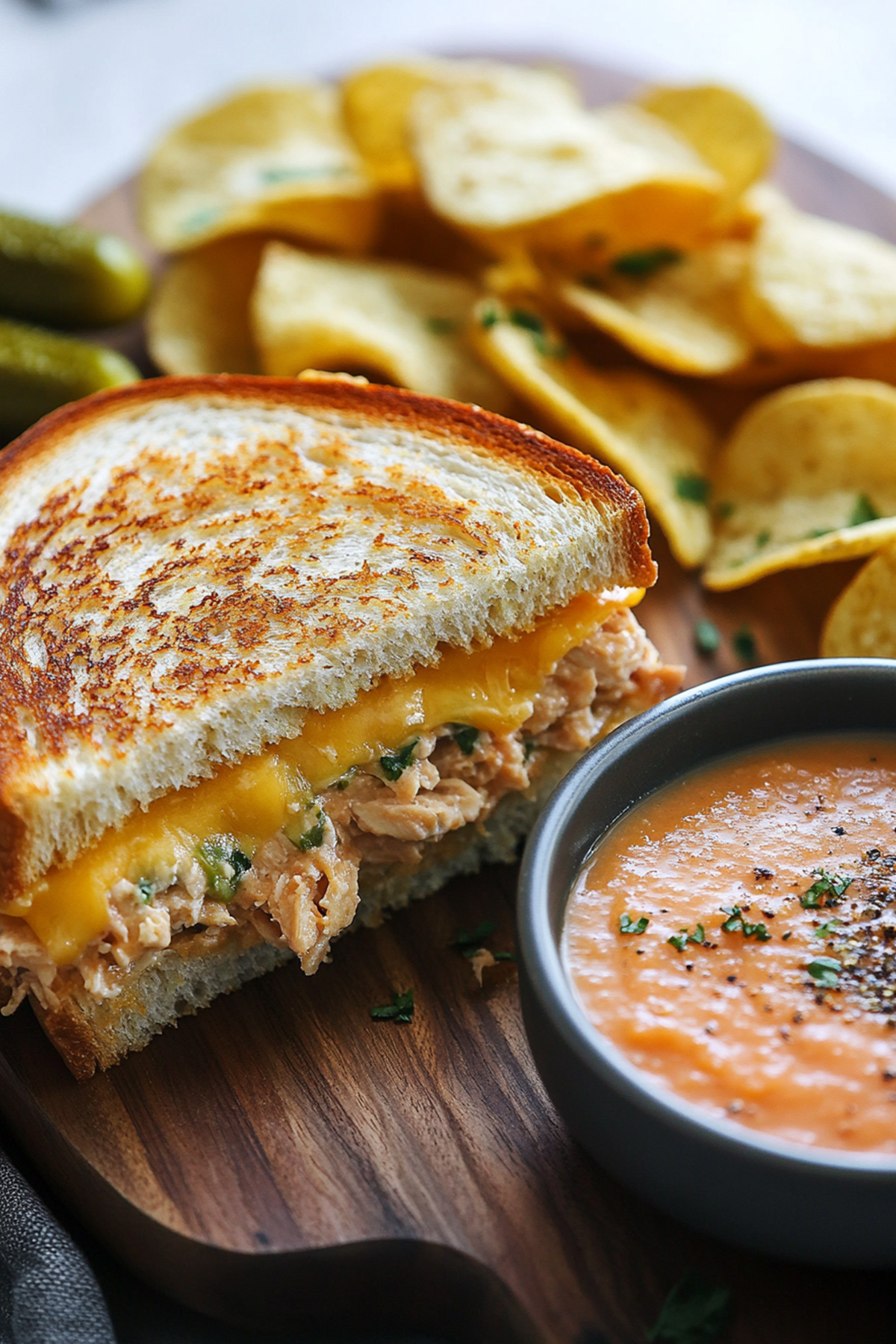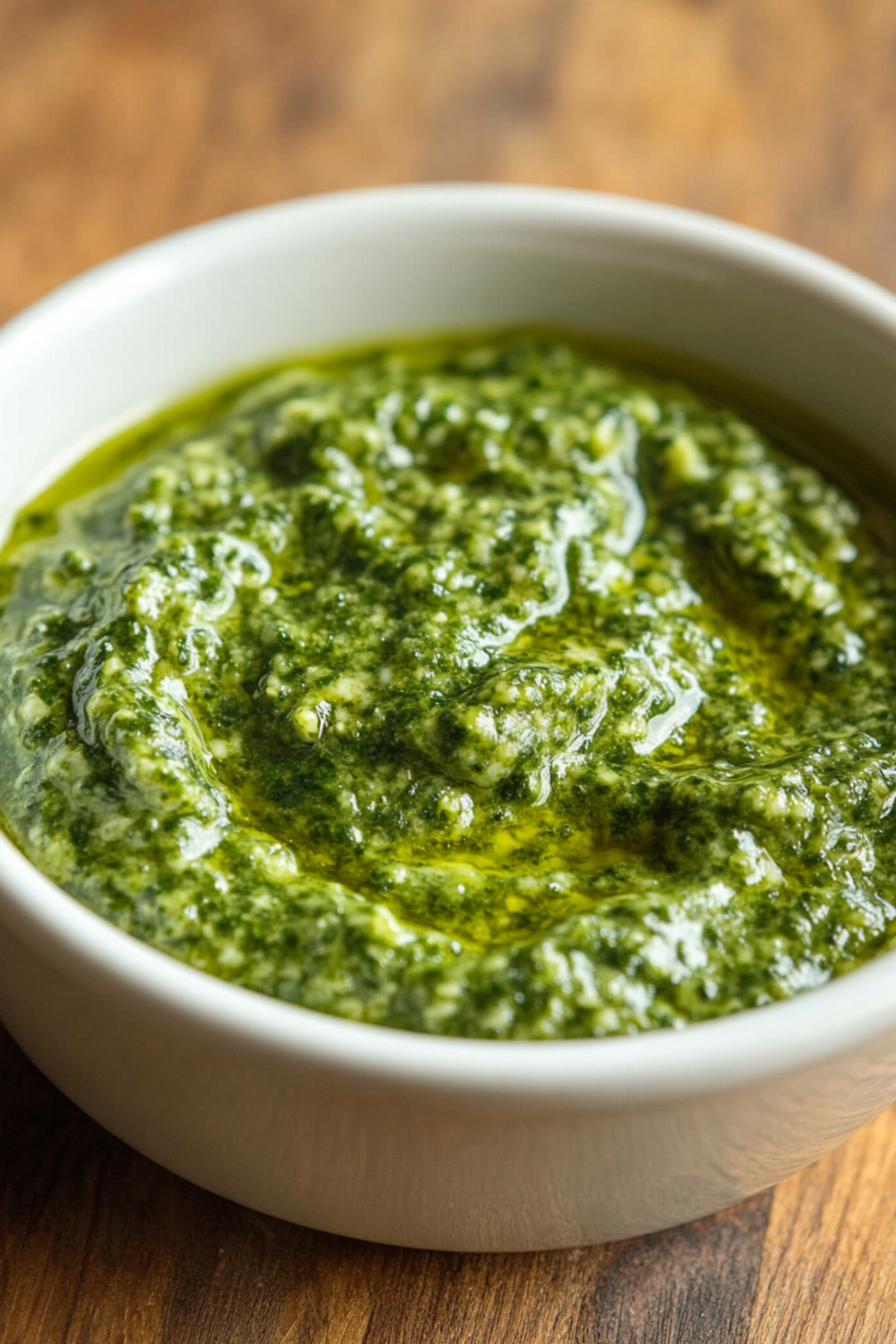Disclosure: As an Amazon Associate and participant in other affiliate programs, we earn from qualifying purchases. We only recommend products we believe will provide value to our readers.
Dragon sushi rolls rank as America’s second most popular sushi creation after the California Roll. Sushi lovers admire its dragon-scale appearance from layered avocado and the delicious mix of shrimp tempura and cucumber.
This beloved roll has won many hearts since American-style sushi first appeared in the mid-1960s.
You can make dragon roll sushi at home more easily than you might expect. Your local grocery store has all the ingredients you need, and the simple techniques make it possible to create this impressive roll in your kitchen.
On top of that, it offers a safe choice for the whole family, including pregnant women and young children, because it contains no raw fish.
This piece will help you become skilled at making restaurant-quality dragon rolls at home. You’ll learn everything from choosing the right ingredients to creating that special presentation that makes this roll stand out.
Table of Contents
What is a Dragon Sushi Roll?
The dragon sushi roll blends Japanese tradition with American taste priorities, showing the rise of modern sushi making. This inside-out roll has nori that wraps around the ingredients inside, while sushi rice covers the exterior.
A traditional dragon roll combines shrimp tempura and cucumber, topped with thinly sliced avocado that creates dragon-like scales. The roll gets its character from a drizzle of spicy mayonnaise and unagi sauce.
Tobiko fish roe adds texture and visual appeal as a garnish.
The classic version stays popular, but new variations keep emerging. Some versions use grilled eel (unagi) instead of shrimp tempura, while others add poached shrimp or mango to create a unique twist. Each bite offers a perfect blend of sweet, creamy, and savory flavors.
The artistic presentation makes this roll stand out. Chefs layer thin avocado slices on top to create the distinctive scale pattern. Creative chefs often take the dragon theme further by adding an artistic face, while others perfect the scale design.
American sushi’s state-of-the-art techniques led to this roll’s creation, developed to please Western palates that enjoy bold flavors and multiple ingredients. Unlike traditional Japanese sushi with its subtle flavors, the dragon roll offers a more complex taste profile.
Quality ingredients are vital to craft an authentic dragon roll. The sushi rice needs precise vinegar seasoning to achieve its subtle tangy flavor and proper texture.
The perfect avocado should have darker skin and yield slightly when pressed, which ensures ideal consistency for those distinctive scales.
The dragon roll’s appeal comes from its accessibility – most versions don’t contain raw fish, making it perfect for people who hesitate to try traditional sushi. Its cooked ingredients welcome sushi newcomers while still pleasing experienced enthusiasts with complex flavors and striking presentation.
Essential Tools and Ingredients for a Perfect Dragon Roll
The perfect dragon sushi roll starts with the right tools and ingredients. A well-equipped kitchen will give you solid foundations to make restaurant-quality rolls at home.
Your essential toolkit should include:
- A bamboo rolling mat wrapped in plastic wrap to prevent rice from sticking
- A sharp sushi knife for clean cuts
- A rice paddle for handling sticky sushi rice
- A wide, flat wooden tub or large baking sheet for rice seasoning
- A handheld paddle fan or electric fan for cooling rice
Japanese short-grain rice is the foundation of your dragon roll. This rice variety’s high starch content creates sushi’s signature sticky texture. You’ll also need nori seaweed sheets cut in half to get the perfect roll size.
The filling ingredients need careful selection. Japanese or Persian cucumbers make the best choice because they have fewer seeds and less water. Finding the right avocados can be tricky – look for ones with darker skin that give slightly to gentle pressure without being mushy.
Shrimp tempura is the traditional protein filling for this roll. Many grocery stores now stock frozen shrimp tempura in their seafood section. Trader Joe’s and Costco have convenient options that give you the perfect crunch.
The signature sauces start with spicy mayo – a mix of Japanese mayonnaise and Sriracha sauce. Japanese mayo is a vital ingredient for authentic flavor. Unagi sauce, also called eel sauce, adds the final touch – you can find it at Japanese grocery stores or make it yourself.
Tobiko (flying fish roe) adds great texture and visual appeal, though it’s optional. Black sesame seeds make an attractive garnish with a subtle nutty flavor.
Keep a mixture of rice vinegar and water nearby to season the rice – this helps prevent it from sticking to your hands during assembly. The right balance of seasoned rice vinegar, sugar, and salt will give your sushi rice perfect flavor.
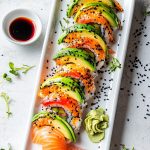
Dragon Sushi Roll
- Total Time: 45 minutes
- Yield: 6 sushi rolls 1x
Description
Becoming skilled at making dragon roll sushi requires understanding the delicate balance of flavors and textures that make this dish exceptional. This recipe combines crispy tempura shrimp, fresh vegetables, and creamy avocado. The stunning presentation tastes as good as it looks.
This dragon roll recipe features sushi rice wrapped around crispy shrimp tempura and cucumber, topped with thinly sliced avocado that creates the signature dragon scale pattern. Each bite delivers sweet, creamy, and savory flavors.
Ingredients
- 2/3 cup sushi rice
- 1 cup water (plus extra for rinsing)
- 1 tablespoon rice vinegar
- 1 teaspoon granulated sugar
- 1/4 teaspoon kosher salt
- 2 tablespoons mayonnaise
- 1 tablespoon Sriracha chile sauce
- 1 medium avocado
- 2 roasted nori sheets
- 1 small Persian cucumber
- 8 cooked large shrimp
- Black sesame seeds
- Soy sauce for serving
Instructions
- Rice Preparation: Rinse sushi rice until water runs clear. Soak in cold water for 30 minutes and cook with 1 cup water until tender.
- Rice Seasoning: Mix vinegar, sugar, and salt in a small bowl. Spread cooked rice on a baking sheet, drizzle with seasoning mixture, then fold gently.
- Sauce Preparation: Mix mayonnaise and Sriracha in a small bowl. Transfer the mixture to a plastic bag and refrigerate.
- Avocado Preparation: Slice half the avocado thinly for topping and cut the remaining half into 1/4-inch slices.
- Roll Assembly: Place nori sheet’s shiny side up on the bamboo mat. Spread rice evenly, cover with plastic wrap, then flip.
- Filling Placement: Layer avocado slices, shrimp, and cucumber matchsticks on the nori.
- Rolling Process: Use the bamboo mat to form a tight log. Cover with plastic wrap and press gently.
- Final Touches: Add alternating avocado and mango slices on top, pressing gently. Cut into 8 pieces using a wet, sharp knife.
Notes
- A wet, sharp long-bladed knife ensures clean cuts through the rolls
- Keep your hands moist with vinegar water to prevent rice from sticking
- Persian or Japanese cucumbers work best due to fewer seeds
- Choose avocados that are ripe but firm enough to slice thinly
- Prep Time: 30 minutes
- Cook Time: 15 minutes
- Category: Seafood
- Method: Raw
- Cuisine: Japanese-American
Mastering the Art of Rolling a Dragon Sushi Roll
Proper technique is the life-blood of creating beautiful dragon sushi rolls. You should cover your bamboo mat with plastic wrap to prevent rice from sticking and get smooth rolling.
Hand Preparation is a vital part of successful rolling. A small bowl of water mixed with rice vinegar should be kept nearby to moisten your hands frequently. This simple technique works well to prevent rice from sticking to your fingers and allows smooth manipulation of ingredients.
Your dragon roll’s foundation starts with rice placement. Spread approximately ¾ cup of sushi rice evenly across the nori sheet while maintaining consistent thickness. The rice needs gentle handling – excessive pressure can make it dense and affect the final texture.
The signature dragon appearance requires precise ingredient arrangement. Your tempura shrimp and cucumber should be placed in a straight line along the nori’s bottom edge. This careful positioning will give each slice an attractive cross-section of ingredients.
The rolling process needs a delicate balance of firmness and gentleness. Your thumbs should hold both sides of the bamboo mat, with the edge closest to you slightly raised. Roll forward using the mat to shape the roll into a perfect cylinder with even pressure throughout.
Creating Dragon Scales requires special attention. Once you complete the first roll, arrange thin avocado slices across a fresh sheet of plastic wrap. Place your roll on top of the arranged avocado and press the slices firmly onto the exterior with the mat. This creates the distinctive scale pattern that gives the dragon roll its name.
Professional-level presentation requires cleaning your knife between each cut by dipping it in warm water. This technique will give clean, precise slices that showcase the intricate layers within. Eight equal pieces provide the ideal serving size for most presentations.
The final shaping is often overlooked but essential. After cutting, use the mat to gently squeeze each piece from the sides to maintain the round shape and keep ingredients in place.
Arrange the pieces slightly offset from each other on the serving plate to create an elegant curved presentation that mimics a dragon’s form.
Health Benefits of Dragon Roll Sushi
Dragon sushi rolls not only look amazing but pack impressive nutritional benefits. A standard serving of six pieces contains 410 calories with a well-balanced mix – 45% carbs, 43% fat, and 12% protein.
Each serving gives you 19g of fats, 45g of carbohydrates, and 12g of protein. The sodium level stands at 560mg, which makes up 24% of your daily needs.
Dragon rolls pack powerful health benefits through their ingredients. Unagi (eel) brings excellent omega-3 fatty acids along with vitamins A, B12, and D. These nutrients play a vital role in brain health and help reduce inflammation throughout your body.
The nori (seaweed wrapper) and other ingredients boost thyroid health with natural iodine. This mineral helps balance hormones and keeps your metabolism running smoothly. You’ll also find anti-inflammatory properties in the wasabi served with these rolls.
The avocado in dragon rolls provides heart-healthy monounsaturated fats. The ingredients work together to support your body in several ways:
- Blood Health: Iron from fish and soy sauce helps produce red blood cells
- Immune System: Wasabi and ginger’s antibacterial properties strengthen your immunity
- Brain Function: Omega-3 fatty acids boost cognitive health and help you focus better
Tempura shrimp or eel provides protein that helps repair and build muscles. The vegetables add essential vitamins and minerals, while cucumber brings hydration benefits and antioxidants.
Each serving contains 2g of dietary fiber and 6g of sugar. The moderate fiber helps your digestion, and the low sugar content makes these rolls a good choice if you watch your sugar intake.
References:
– Eat This Much
– Healthline
Nutritional Profile of Dragon Roll Sushi
The dragon sushi roll’s nutritional composition helps you make better dietary choices. Restaurant serving sizes can vary, which affects the nutritional content.
A complete dragon roll (386g) packs 568 calories, with 26g total fat (33% DV), 46g carbohydrates (17% DV), and 37g protein. The roll has substantial amounts of essential minerals and contains 1016mg sodium (44% DV), 778mg potassium (17% DV), and 79mg calcium (6% DV).
Each piece (48g) contains these nutrients if you’re watching your portions:
- 71 calories
- 3.2g fat
- 5.8g carbohydrates
- 4.6g protein
- 127mg sodium
The macronutrients are distributed in a balanced way:
- 45% carbohydrates
- 43% fat
- 12% protein
Prepackaged versions (100g) are lighter with 175 calories, 4.8g protein, 20.6g carbohydrates, and 7.9g fat. These versions maintain a moderate sodium level at 397mg per 100g serving.
Dragon rolls pack 2.5mcg Vitamin D (13% DV) and 1.7mg Iron (9% DV). The roll’s fat profile shows 4.4g saturated fat, 14g monounsaturated fat, and 5.2g polyunsaturated fat.
The fiber content changes based on how it’s prepared, ranging from 2g to 7.3g per serving. Sugar levels stay consistent between 6g to 7.2g per serving.
Cholesterol levels can vary substantially based on ingredients, ranging from 70mg to 289mg per serving. Different protein sources and preparation methods cause these variations.
Different ingredients affect the nutritional profile:
- Traditional eel versions have more fat
- Vegetarian options usually contain fewer calories
- Tempura versions show more carbohydrates
- Avocado-rich versions give you more healthy fats
A full dragon roll provides 350-643 calories, depending on size and ingredients. The protein ranges from 7g to 37g, making it a good protein source.
References:
– Eat This Much
– Snap Calorie
Common Mistakes to Avoid When Making a Dragon Roll
The perfect dragon sushi roll depends on avoiding mistakes that can mess up both taste and looks. The quality of your nori makes a vital difference – rolls tend to fall apart when the nori soaks up too much moisture if left exposed.
You can fix this by toasting the nori over an open flame or in the oven until it gets crispy again.
Rice distribution trips up many beginners. They often use too much rice, which makes the roll too big and hard to work with. The trick is to spread a thin layer of rice on the nori sheet and leave a 2cm gap at the top so it seals well.
Stuffing too many ingredients inside can also make the roll fall apart.
Your knife skills really shape how the final roll looks. A dull blade or not wetting it between cuts leads to sloppy, uneven pieces. You’ll need a sharp, long-blade knife without serrations. Just dip it in water before each cut and let the water run down the blade.
Good timing can make or break your sushi-making experience. Many people don’t realize how long it takes to prep ingredients and clean up. Make sure you have enough time to get everything ready – cutting vegetables and fish usually takes longer than you’d expect.
The rolling technique needs just the right pressure. For inside-out rolls, press as if you’re giving someone’s arm a gentle massage.
If your roll keeps breaking, try pressing a bit harder while making sure everything stays tucked in.
Tempura can be tricky. The most common problems are:
- Not enough flour in the batter
- Oil temperature that’s all over the place
- Wet ingredients going into the fryer
Avocado toppings need special attention. Finding ripe avocados takes practice – they should give slightly when pressed but not feel mushy. If they’re a bit firm, let them ripen on your counter.
The way you store your rolls makes a big difference. After rolling, they need to chill in the fridge for at least an hour before serving. This helps the rice set and makes the rolls easier to handle.
Temperature really matters with sushi ingredients. Hot rice leads to mushy rolls, so let it cool to room temperature first. Be gentle when adding avocado on top – squeeze too hard and you’ll end up with mashed avocado instead of neat slices.
Regular cucumbers can cause problems with their waxy skin and lots of seeds that make rolls too wet. English or Persian cucumbers work better – just scoop out the seeds with a spoon first.
The rice needs a gentle touch when you put it on the nori. You should see each grain of rice clearly. Getting the right balance of rice and fillings takes practice. If the nori looks too small, cut back on fillings rather than overstuffing.
Conclusion
Making the perfect dragon sushi roll might seem challenging at first glance, but with proper techniques and quality ingredients, you can create this impressive dish at home.
The combination of crispy tempura shrimp, fresh vegetables, and perfectly layered avocado creates both visual appeal and balanced nutrition.
Practice helps you become skilled at the rolling technique. You’ll need properly seasoned rice, carefully selected ingredients, and the right tools.
The original attempts might challenge you with ingredient ratios or pressure application, but each try brings you closer to restaurant-quality results.
Dragon rolls are an excellent choice for both sushi beginners and enthusiasts. Their striking appearance and substantial nutritional benefits include heart-healthy fats, protein, and essential vitamins.
On top of that, it contains no raw fish, making this roll a safe entry point into sushi making for your whole family.
Quality ingredients and proper technique deserve your full attention during preparation. Your skills will improve with each attempt, and soon you’ll bring professional sushi’s artistry and flavors right to your dining table.

